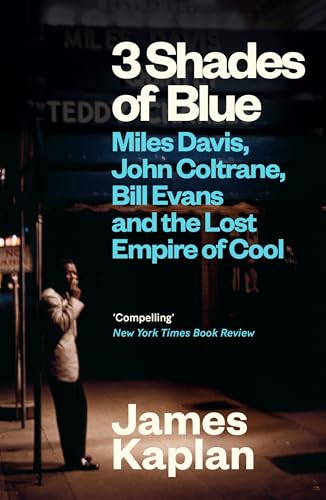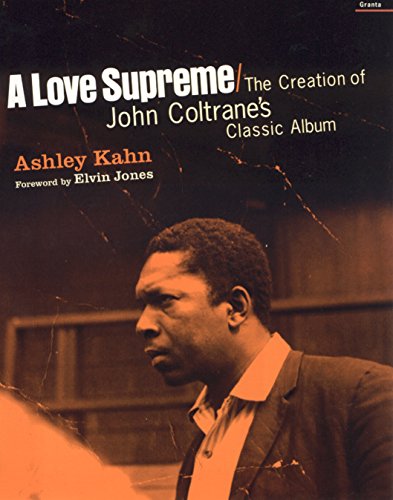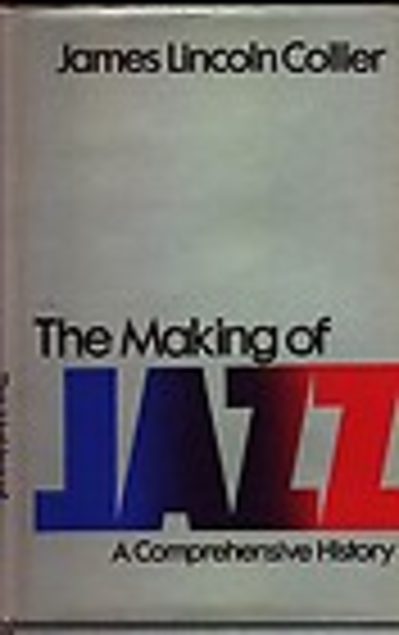Book 72 - James Kaplan "3 Shades of Blue"
Dec. 30th, 2025 09:16 pmJames Kaplan "3 Shades of Blue:Miles Davis, John Coltrane, Bill Evans & The Lost Empire of Cool" (Canongate)

I was expecting this to be more about the making of Kind of Blue, which should be a desert island disk for pretty much everyone, but those two recording sessions get only a few pages here.
It's actually a triple biography of Miles Davis, John Coltrane, and Bill Evans, although Miles (who, after all, lived a lot longer and was responsible for bringing the other two together) gets most of the space. The author combines lots of sources to try to tell the story coherently, but especially in the case of Davis, it is hard to sort fact from fiction. Just as he took credit for others' compositions, Davis also had a truth optional approach to remembering his own life. Mostly he comes across as a very unlikable character--yet--during the author's own interview with Davis many years before he had any idea about writing this book, Davis charmed him. And there are anecdote after anecdote in the book about good things Davis did for people, such as his mentorship of Wallace Roney. Of course, all this is interspersed with Davis's addiction to heroin, cocaine, Heinekin bee, you name it. Likewise, Coltrane and Evans were serious drug users, a habit Coltrane managed to finally kick, only to die at age 40 of hepatitis and cancer. Evans was an even worse addict, who only managed to kick drugs for a few years before returning to them for the last few years of his short--but not so short as Coltrane--life.
Miles struggled on, constantly trying to keep up with the times, leading to the creation of jazz fusion and the incorporation of electric instruments into his music, exemplified by the best-selling Bitches Brew album. Despite the book's length, however, much of it seems sketchy and there's a lot left out. Miles great In A Silent Way album gets hardly a mention, and it would have been nice to see the author's reportage on Miles final recordings, including his version of Cyndi Lauper's Time after Time!
Still, this is recommended, and it will point you to some great recordings that you can easily stream, or better still, purcahse as a CD or vinyl. At times this seems more like a well-done compilation (sort of like the tape-splicing to create Bitches Brew) that it does an original biography, but it reads well, informs quite a bit, and tries to stick to the facts or when that can't be done, at least provide perspectives on all sides of a story.
A good read overall.

I was expecting this to be more about the making of Kind of Blue, which should be a desert island disk for pretty much everyone, but those two recording sessions get only a few pages here.
It's actually a triple biography of Miles Davis, John Coltrane, and Bill Evans, although Miles (who, after all, lived a lot longer and was responsible for bringing the other two together) gets most of the space. The author combines lots of sources to try to tell the story coherently, but especially in the case of Davis, it is hard to sort fact from fiction. Just as he took credit for others' compositions, Davis also had a truth optional approach to remembering his own life. Mostly he comes across as a very unlikable character--yet--during the author's own interview with Davis many years before he had any idea about writing this book, Davis charmed him. And there are anecdote after anecdote in the book about good things Davis did for people, such as his mentorship of Wallace Roney. Of course, all this is interspersed with Davis's addiction to heroin, cocaine, Heinekin bee, you name it. Likewise, Coltrane and Evans were serious drug users, a habit Coltrane managed to finally kick, only to die at age 40 of hepatitis and cancer. Evans was an even worse addict, who only managed to kick drugs for a few years before returning to them for the last few years of his short--but not so short as Coltrane--life.
Miles struggled on, constantly trying to keep up with the times, leading to the creation of jazz fusion and the incorporation of electric instruments into his music, exemplified by the best-selling Bitches Brew album. Despite the book's length, however, much of it seems sketchy and there's a lot left out. Miles great In A Silent Way album gets hardly a mention, and it would have been nice to see the author's reportage on Miles final recordings, including his version of Cyndi Lauper's Time after Time!
Still, this is recommended, and it will point you to some great recordings that you can easily stream, or better still, purcahse as a CD or vinyl. At times this seems more like a well-done compilation (sort of like the tape-splicing to create Bitches Brew) that it does an original biography, but it reads well, informs quite a bit, and tries to stick to the facts or when that can't be done, at least provide perspectives on all sides of a story.
A good read overall.






:format(jpeg):mode_rgb():quality(40)/discogs-images/R-7698765-1450471072-2351.png.jpg)
:format(jpeg):mode_rgb():quality(40)/discogs-images/R-6048241-1460987022-5312.jpeg.jpg)
:format(jpeg):mode_rgb():quality(40)/discogs-images/R-4115575-1534724625-5306.jpeg.jpg)
:format(jpeg):mode_rgb():quality(40)/discogs-images/R-7033609-1536280419-2561.jpeg.jpg)
:format(jpeg):mode_rgb():quality(40)/discogs-images/R-1547115-1462445911-7713.jpeg.jpg)
:format(jpeg):mode_rgb():quality(40)/discogs-images/R-2802230-1521013528-5125.jpeg.jpg)
:format(jpeg):mode_rgb():quality(40)/discogs-images/R-2604153-1292754459.jpeg.jpg)
